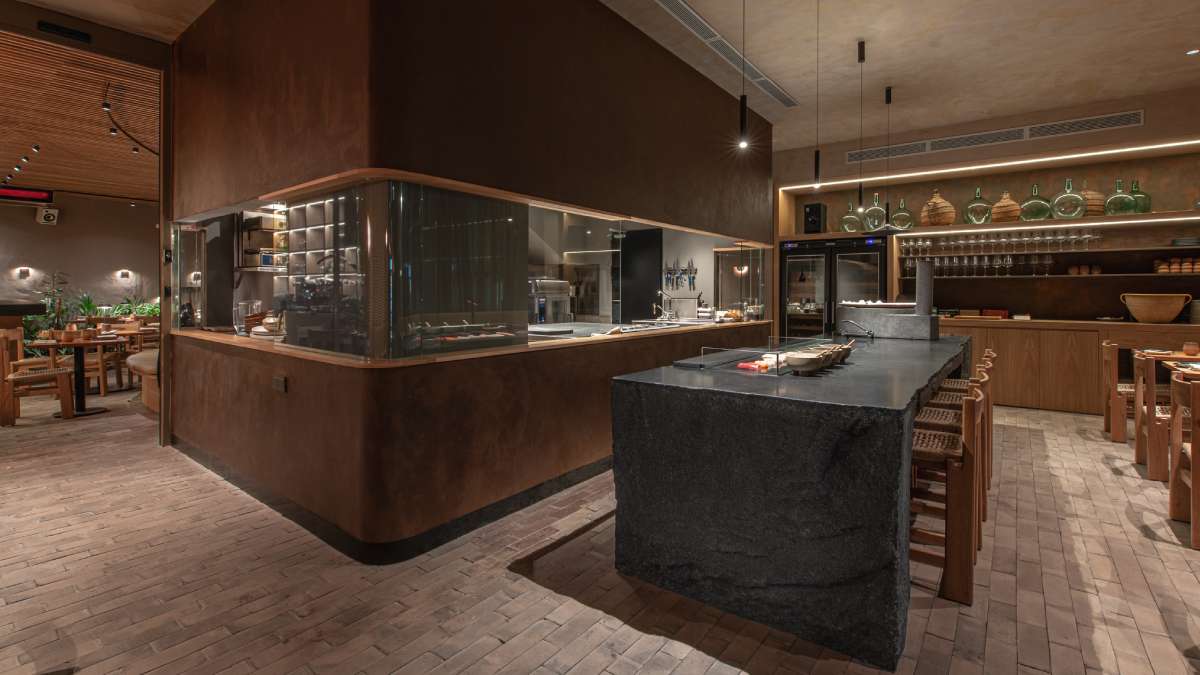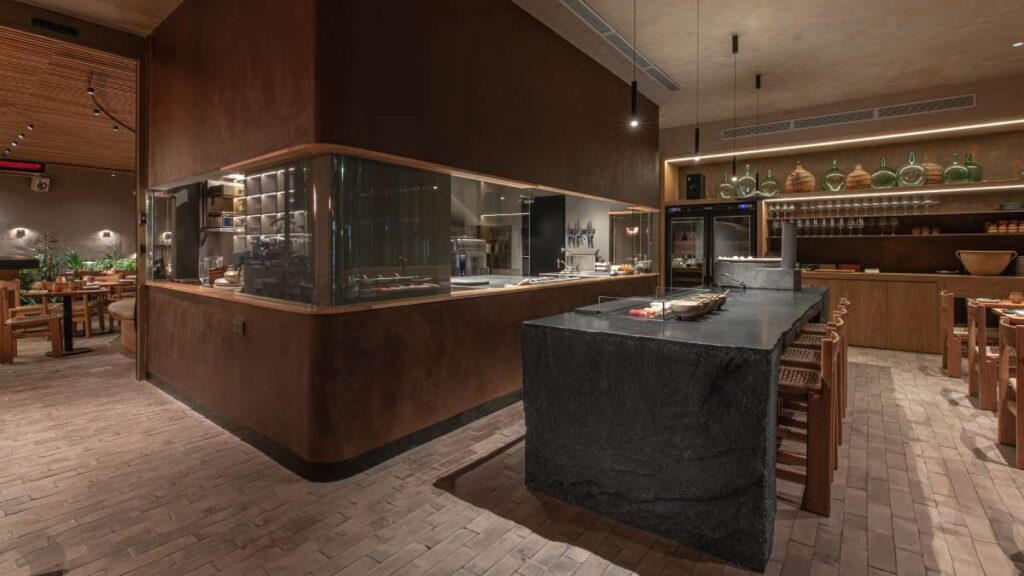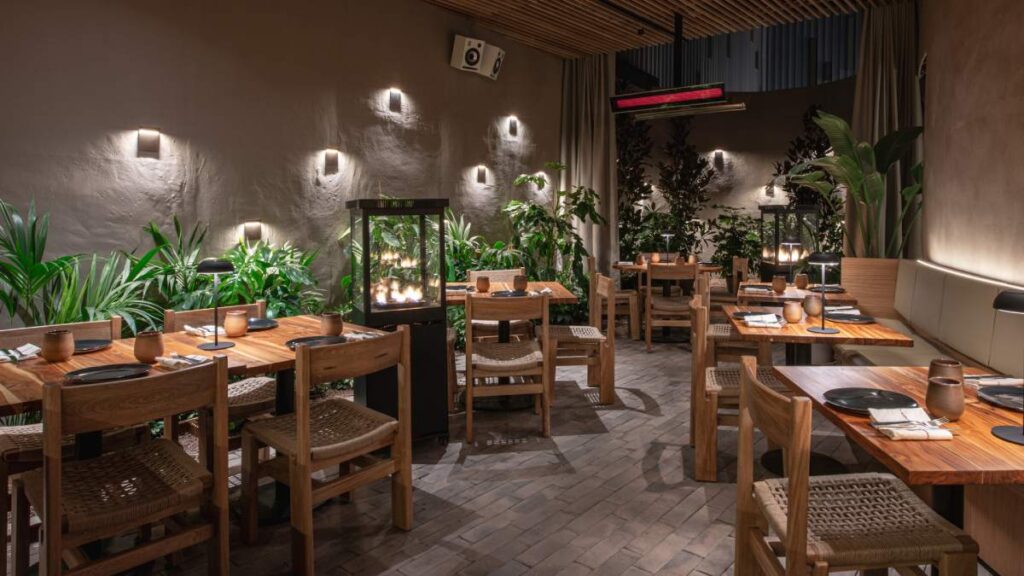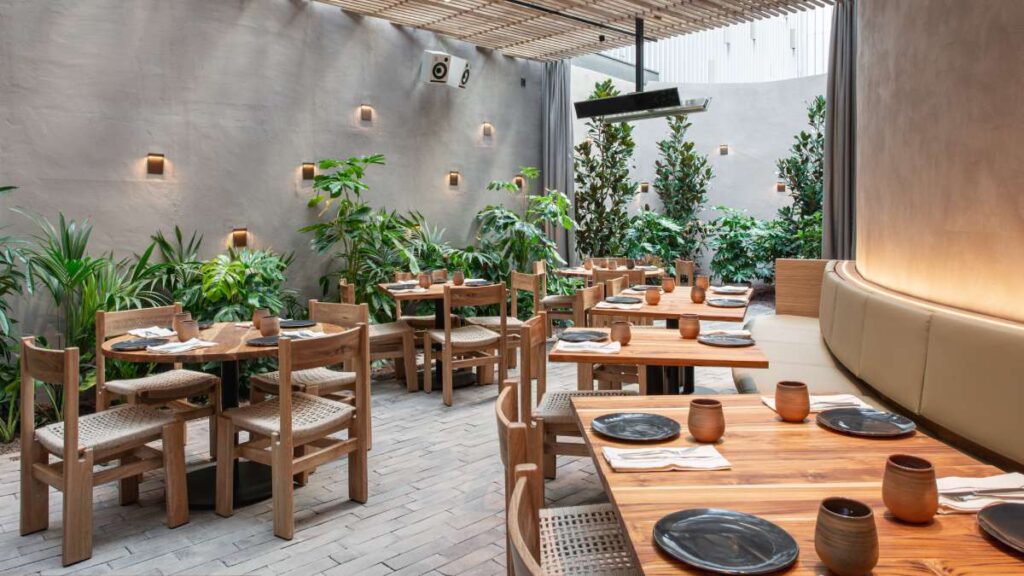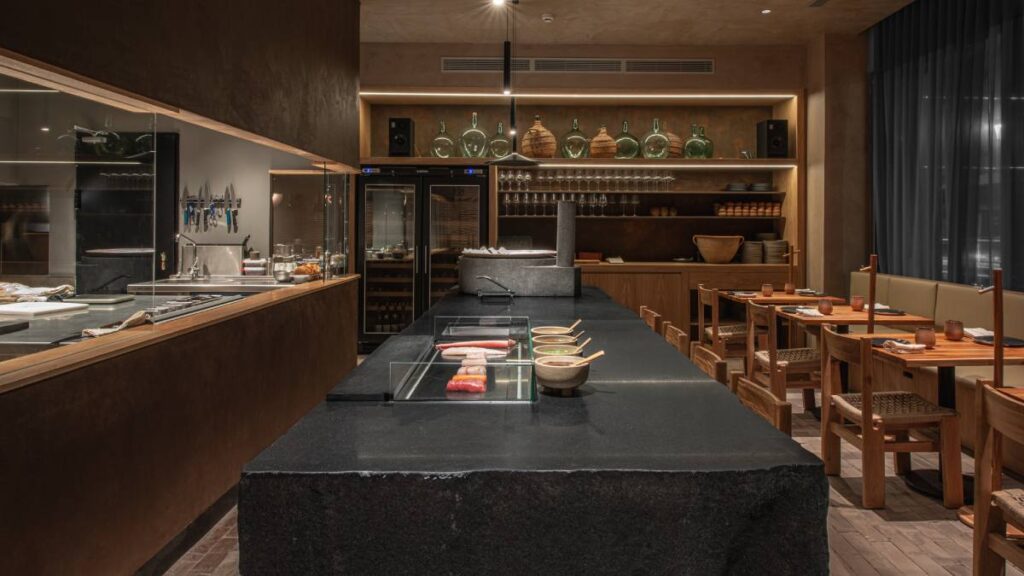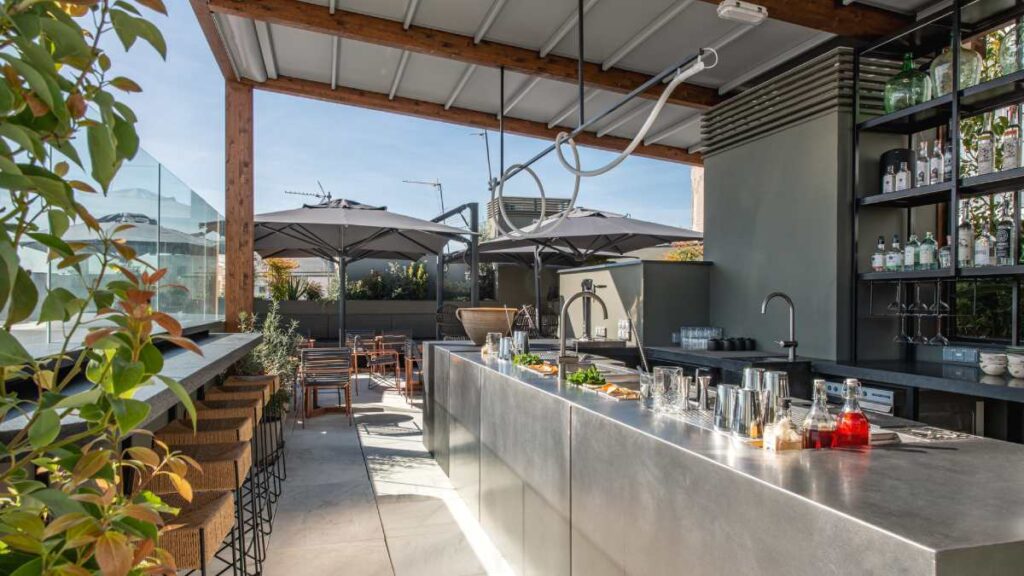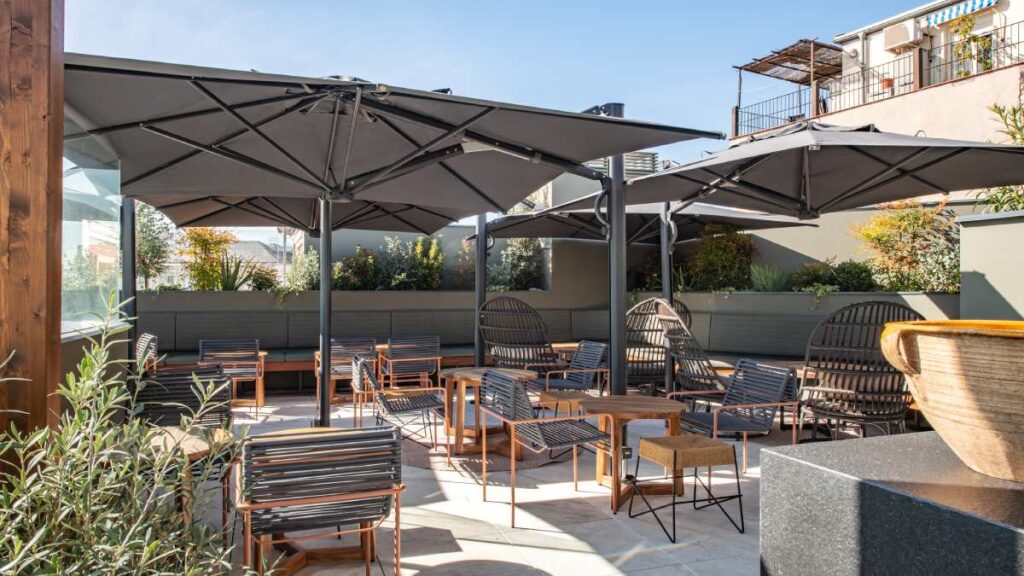Click here to read the Spanish version.
In just a few months, the restaurant Ticuí and its newly opened terrace, called 40/42, have become one of the hotspots in Madrid where you can delve into the authentic Mexican culture. And not only through the palate, but with all the senses. In the latest project of Federico Rigoletti, chef of Puntarena, the space and the decoration acquire a protagonism almost at the height of the culinary proposal. And it is all thanks to the good work of the Mexican studio JSa arquitectura. To unravel all the nooks and crannies of Ticuí and understand a concept that goes beyond the functional and aesthetic, we spoke with Aisha Ballesteros and Javier Sánchez, two of the partners of JSa Arquitectura along with Benedikt Fahbusch, who are responsible for materializing the restaurant’s space.
The restaurant Ticuí and its terrace 40/42 were your first project in Spain. How did the whole process develop to bring a part of Mexico to the heart of Madrid?
We started working first in hotels and that led us to get into restaurants as well. Maybe up until 10 years ago, restaurants were more focused on food. But now that is no longer enough, you need to offer a complete experience. After meeting Federico Rigoletti, we suggested to him that maybe in Puntarena we could help him to start bringing this more integrated concept to his premises. Working with him in his restaurant in Mexico, suddenly the opportunity appeared for Ticuí in Madrid, a city where Puntarena has already been in the Casa de México for 5 years.
With Ticuí they wanted to make a different place. A bet towards something smaller and designed. In the end, this place is like this celebration of all these years of work, but it also means realizing that architecture and design should be added. And that’s when we started to work together in the conceptualization of the place. They were clear about certain concepts, but they didn’t know where they wanted to place their bets. And our job was to materialize all that.
In Ticuí the roots of the most artisanal Mexico converge, but with a contemporary and current design. How has it been materialized to move it more than 9,000 km away?
In Ticuí many things converge because, behind all the design, there is a great work of craftsmen. And transferring elements such as clay to the glasses of a restaurant has its complexity, since you need specialized knowledge. When you take an element like this to a restaurant, you need it to withstand use and washing. In addition, here in Spain the regulations are different, so you also have to glaze the rim, but in Mexico it would be the same if you take it from the earthenware glass. For all these reasons, there is an editor who has been in charge of listening to all our requests and turning them into reality.
Another element brought from Mexico are the uniforms, which are designed by Collectiva Concepción, a workshop where Mexican designers, clothing makers and artisans make fashion and also the whole graphic design theme. They are a nice set of creative minds that are somehow underpinning all the edges of the concept, to support everything that comes after, which is the food.
Undoubtedly, one of the elements that stands out the most is the bar at the entrance where there is a typical comal to prepare tortillas. But Mexico is certainly breathed in every nook and cranny.
Ticuí is an intimate and cozy space. The light is dim, so the idea is to get to this room where the main character is the stone bar that is in the center and has this comal, a traditional element of Mexican cuisine where tortillas are made. But we also have a canvas made from corn leaves called totomoxtle [located on one of the walls of the room] and then you discover a patio that is integrated into the space, but at the same time has its own characteristics.
Then you have the drinks bar, which is very powerful and large, where you can see how the bartenders are preparing the drinks in a patio full of vegetation and accompanied by all the Mexican design furniture. Also, all the chromatic textures are very homogeneous and are in coordination with earth and sand colors to underpin the whole concept.
Are there many differences when it comes to managing a project in Mexico or Spain?
Everything, almost down to the language -they laugh-. Here everything is more technical and everything is much more in mass production. So there have been very important challenges when we want very particular things. That is why we have also made decisions such as bringing the chairs from there. But, for example, it was impossible to bring the stone for the bar from Mexico. In the end, we are two countries that have many things in common and these are what have allowed us to have a place that looks like Mexico. The knowledge that there is here of all the porcelain, allows us to have the dishes made here, among other things. There have been challenges, but in the end, this is the place and the difference.
It must have been a very open project, because in the end the chefs, at the beginning, also usually have a pretty clear idea of what they want….
Absolutely. In the end, architects become chefs and chefs become architects. That is to say, we even have a say in the assembly of the dishes, the design of the menu? Federico and Arturo Argüelles (director and partner of the project) are also the ones who have been here saying: “hey, let’s see what you think, can you see the fish when we are cutting it? And with that idea, we are already looking to integrate a marble slab that cools and starts this back and forth between the cultural, the technical and the experiences.
In the end we are a team. We feel part of this restaurant, we are not the ones who came to make it your home and left. It is a job we do in every project. We have not made 200 restaurants either. We are very careful that there are 5, but we take care of those 5 in detail. And we’re always back on site looking for improvements and it never really ends.
Is it difficult to find the equation between aesthetics, functionality, ergonomics and sustainability?
Well, it is a carambola of things. For example, the back of the sofas are not made of animal skin. They come from a nopal [a plant from Mexico]. Then you can’t just buy the wood anywhere, you have to bring it from a certified sawmill. In the end, that’s the challenge. And it’s also true that we have risky bets like the flooring. It would be easier to buy marble, but we wanted a clay floor. Today we are already at a point where our experience gives us the intuition to know what things to do and how to do them. And it’s fun to bring it to a place where, maybe, everything is already taken for granted. And, all of a sudden you find a place like this and you say, “Oh look, there’s a corn put on the wall…”. It’s also fun to listen to the comments.
In this age of Instagram and sharing everything, you have to look for the visual and eye-catching.
That happens to us a lot in the bathrooms. There are some multi-perforated copper sheets that have a light behind them and many times they ask us: “But why in the bathroom? And we tell them that the bathroom is where everyone takes a selfie and we have to take care of that need -they laugh-. In other words, the bathroom is just as beautiful and is not disconnected from the rest of the project.
There is also one other interesting thing about the rooftop. We have a suspended lamp that can be seen from other rooftops. These are identifying elements that go even beyond the building’s border. In other words, in the end there is a lot of competition. So you have to bet on things that differentiate you. This snake that is up there, it lights up at night and you can see it from the other rooftops.
You are working at the home of Enrique Olvera, another of Mexico’s most important chefs, with whom you have already worked at his restaurant in CDMX. How do you approach a chef’s home?
It was very similar to working with him in restaurants like Pujol. He also has a very keen eye for architectural design. So he is one more collaborator in the project’s decisions.
Is Ticui the confirmation for JSa arquitectos to start developing new projects in Spain?
We are arriving in Madrid and finishing finding common ground. I think that having this project already finished for us is the confirmation that we want to continue doing things here and that we are obviously open to different programs already with our experience. Also, we are designing other restaurants here in Madrid and we are in talks about some other things, like housing.
And finally, what dishes of Spanish gastronomy do you like the most?
I love tapas, that idea of entering a place and eating something in two seconds, with a beer or a vermouth. In Mexico we don’t have it, maybe the closest thing is tacos al pastor…. I also like all the winter food, the cocidos. They really catch my attention.

